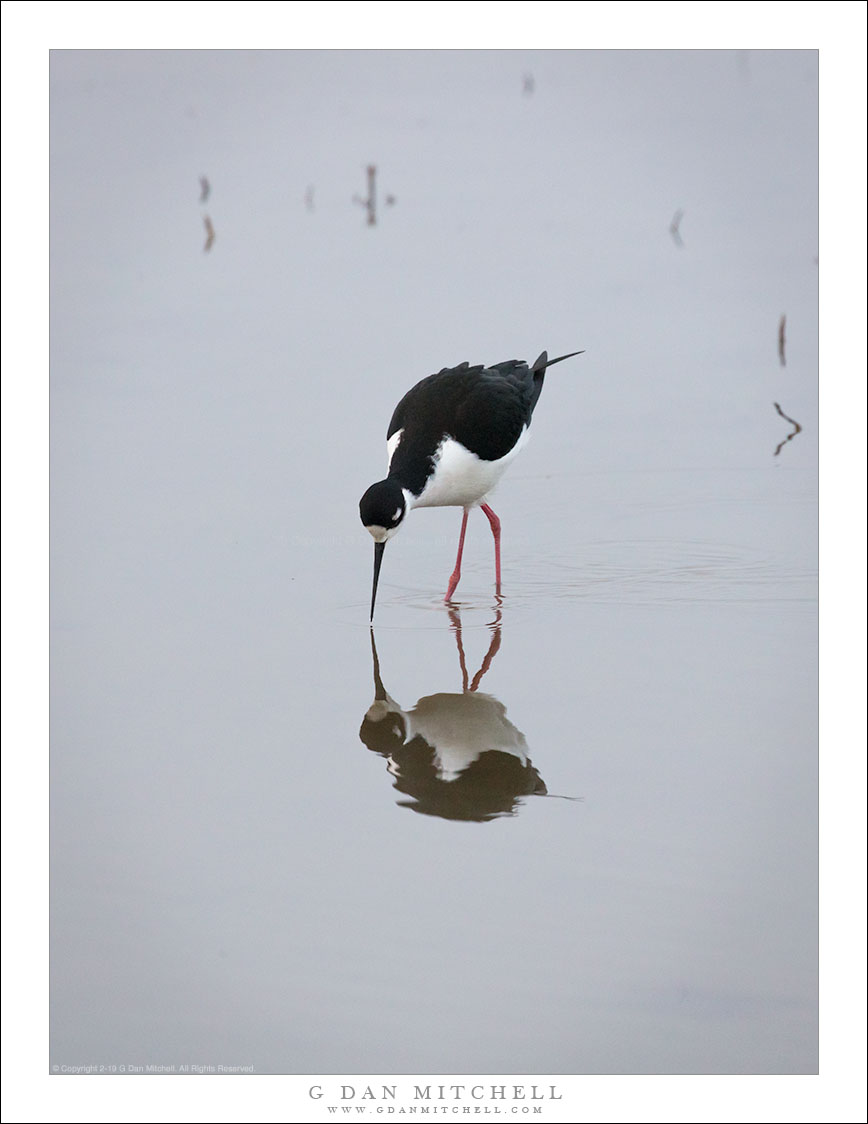
Feeding Black-Necked Stilt. © Copyright 2019 G Dan Mitchell – all rights reserved.
A black-necked stilt feeding in a season wetland pond.
The black-necked stilt is a fascinating bird, even to someone like me whose knowledge of birds is somewhat limited. (I know a lot by osmosis and observation, but not much at all from formal learning.) I often seen them along the margins of wetland ponds, where the water is just about the right depth for their long legs. Sometimes I see one of them alone, but more often they are in small, loose group. They seem to spend a lot of time foraging, and much less flying about — though every so often they will quickly take off.
They are an interesting combination of gangly awkwardness and sleek beauty. Those long legs can almost give them a comic appearance at times, but they also allow them to wander about in water that is several inches deep. Their coloration is simple but striking — white on the bottom and black on top — and their round heads hold long narrow beaks. When you observe them you are bound to see them do some odd things with their legs — sometimes moving them with great deliberation, occasionally holding delicately balanced poses, sometimes bending awkwardly.
G Dan Mitchell is a California photographer and visual opportunist. His book, “California’s Fall Color: A Photographer’s Guide to Autumn in the Sierra” is available from Heyday Books and Amazon.
Blog | About | Flickr | Facebook | Email
Links to Articles, Sales and Licensing, my Sierra Nevada Fall Color book, Contact Information.
All media © Copyright G Dan Mitchell and others as indicated. Any use requires advance permission from G Dan Mitchell.

Thanks, Lon.
Indeed, I virtually always use AF and the standard optical viewfinder for wildlife photographs. (The only exception might be the rare use of a tilt/shift lens to photograph a “landscape with birds.”)
Live view manual focus would just we way too slow for this agile and dynamic birds. Even the Canon 5DsR live view AF would be far to cumbersome.
For me, live view is mostly for photographs that I do in a more “old school” landscape manner.
Dan
Hi Dan, beautiful image. I have a soft spot for wading birds.
You are a proponent of live view / manual focus for your landscape work but I would imagine you are using autofocus for most images such as tis one?